Updated 05/29/2024
Jean René Lacoste was a French tennis player and businessman. Nicknamed “Le Crocodile,” he was the inventor of the original Lacoste polo shirt and co-founder of the Lacoste clothing company. He was born on July 2nd, 1904 and died on October 12th, 1996 at the age of ninety-two.
Family History
René was the son of Jean-Jules Lacoste and Jeanne-Marie Magdeleine Larrieu-Let. He was born in Paris at 28 Rue Albouy in the city’s 10th Arrondissement. His father, Jean-Jules was a champion rower (he won the French title in 1890), an enthusiastic inventor and an entrepreneur: all things that René would also become. Jean-Jules was the founder of the car manufacturer J. Lacoste & Co., later known as Lacoste et Battmann. In addition to his own company, Jean-Jules handled the affairs of the much larger Hispano-Suiza auto company which had opened a factory at Levallois-Perret, in 1911, to be close to the lucrative Paris markets. It was Jean-Jules’ connection with Hispano-Suiza that eventually led to René’s meeting with his Lacoste cofounder André Gillier.
René Lacoste was married to Simone Thion de la Chaume, a French amateur golf champion on June 30th, 1930. They had three children: one daughter and two sons. Their daughter Catherine Lacoste was a champion golfer and president of the Golf Club Chantaco, founded by her mother, at a few kilometers from St. Jean-de-Luz. She also won the US Open in the 1960s. His sons, Bernard and Michel on the other hand, were not exceptional athletes.
Tennis Career
Lacoste was not originally interested in tennis and did not play a game until he was fourteen or fifteen, but a trip with his father to England where he witnessed a tennis match ignited his interest. His father, though, had planned to enroll him in a prestigious French engineering school, so when René insisted on playing tennis, he gave him an ultimatum: become a world champion within five years or else he would decide his future. Lacoste responded by dedicating himself to tennis in a way few other people could have, and became a top player within three years.
René responded by winning the French Covered Court Championships at the Tennis Club de Paris in the 16th Arrondissement. This qualified him to play professionally, and he was soon entered at Wimbledon where he competed in both Singles and Double:
He was paired with French tennis star Jean Borotra, six years his senior, for the doubles. The two men knew each other well, having battled it out over the net on several occasions, but their sporting rivalry never stopped them getting along. René Lacoste and Jean Borotra made a remarkable doubles team; Lacoste calm but determined, Borotra a flamboyant player of spectacular style. It was an explosive and highly effective pairing. At Wimbledon that year, the duo’s dazzling victory over an American doubles team propelled them to the semi-finals. Lacoste could return home to Courbevoie with his head held high.
https://www.lacoste.com/gb/news/heritage/crocodile-story-destiny.html
Lacoste went on to become one of The Four Musketeers, a group of French tennis stars who dominated the game in the 1920s and early 1930s. He won seven Grand Slam singles titles in the French, American, and British championships, but never made the long sea trip to Australia to play in their championships. René was the world number one player for both 1926 and 1927. In all, Lacoste won eleven majors (seven singles, four doubles), and is considered by many to be the best of the four French players who made up the Four Musketeers.
In the words of the Tennis Hall of Fame to which he was elected in 1976:
Though not blessed with superstar-like athletic talent, Lacoste still had terrific skills, and he turned himself into a world champion the old fashioned way: through determination, training, fitness, and a journal of copious notes that he kept on each of his opponents. Lacoste preferred playing from the baseline, where he could employ strategic changes in pace. He would hit short, and mix in a pinpoint lob with accurate passing shots.
https://www.tennisfame.com/hall-of-famers/inductees/rene-lacoste
In the videos of Lacoste playing tennis on YouTube, his tactics can be clearly seen. In 1928, René published a book called Lacoste on Tennis that outlined his methodical approach to the game. You can still find used, albeit very expensive, copies on Amazon.
Crocodile Nickname
René was nicknamed “Le Crocodile” by fans although the reasons for this nickname have been disputed. Some sources say it was because of his tenacity on the court, while others say it was after a crocodile-skin suitcase he took with him on tour. It’s also been claimed that Lacoste and the captain of the French Davis Cup team had a bet with the winner receiving an alligator skin suitcase. In 2018, a grandson of George Carens, a sportswriter for the Boston Herald Traveller in the 1920s, said that it was Carens who had given Lacoste his nickname after hearing the story of the suitcase. In the grandson’s words:
[he] Started calling him ‘The Crocodile.’ Over the years, he used to write lots of articles about him. And the name stuck. … He basically said that ‘The Crocodile’ described him perfectly … Tenacious on his grip, flashing an omnivorous, toothy grin. He was relentless, and chewed up his opponents slowly. But, without a doubt, the valise was the genesis of it.
https://www.wbur.org/onlyagame/2018/12/14/george-carens-lacoste-crocodile
Whatever the source, Lacoste embraced the nickname, saying “the nickname highlighted my tenacity on the tennis courts, never giving up my prey.” In honor of his nickname, René Lacoste’s friend Robert George embroidered a crocodile onto a blazer that Lacoste wore for his matches.
In 2014, Guy Forget, who led the French Davis Cup Team to victory in 1991, speaking to CNN, said of Lacoste’s playing style, “One of his traits on the court was that he’d never give up, he’d return every ball back. He was unbeatable and that’s how that name came. It’s great to identify someone with an animal.”
René retired from competitive tennis in 1929 at the age of twenty-five, after winning the French Open, because his health and game had declined due to a respiratory disease, reportedly Tuberculosis. Subsequent to his retirement, he served as Captain of the French Davis Cup Team from 1931 to 1933, winning the cup in both 1931 and 1932.
Lacoste Shirt and Company
The Lacoste shirt was launched almost by chance. According to an interview, René gave to People Magazine in 1979:
In the late 1920s René always played in the standard white pants and starched shirt with collar and cuffs. “One day I noticed my friend the Marquis of Cholmondeley wearing his polo shirt on the court,” remembers René. ” ‘A practical idea,’ I thought to myself.” It was so practical, in fact, that René commissioned an English tailor to whip up a few shirts in both cotton and wool. “Soon everyone was wearing them,” he smiles.
https://people.com/archive/see-you-later-alligator-rene-lacoste-makes-sure-the-world-sees-it-everywhere-now-vol-12-no-16/
It was at the 1926 US Open that René debuted the first version of his tennis shirt. At the time, most players wore ordinary long-sleeved white shirts with the sleeves rolled up, but Lacoste appeared on court wearing a shirt he had designed himself – a white short-sleeved “chemise” made out of a light knitted, breathable jersey fabric called “petit pique.”
In 1933, René founded La Société Chemise Lacoste with André Gillier. The company produced a version of the tennis shirt which Lacoste had worn when he was playing, which had a crocodile logo embroidered on the chest. The shirt was known as the L.12.12, because it had required 12 versions before Lacoste was satisfied (For more details on the development of the polo shirt, see The History of Lacoste). René led Lacoste until 1963 when he turned the company over to his son, Bernard Lacoste.
Other Inventions and Patents
René Lacoste was a prolific inventor throughout his life, and once said, “Inventor should be on my business cards. I’ve been inventing all my life.” In the 1920s, at the age of 24, he invented the tennis ball machine to help him practice his overhead swing. You can see 1920s Newsreel footage of Lacoste’s machine on Youtube. Early on, he also patented the unique collar of the Lacoste polo shirt.
Lacoste, even as a player, was always experimenting with equipment: he was the first player to wrap the grip of his racket in surgical tape. In 1961, Lacoste created an innovation in tennis rackets by designing the first tubular steel tennis racket. He also developed a new polyurethane golf driver, which helped begin the sport’s transition to composite material-based clubs.
In his later years, Lacoste continued to create inventions. In 1973, he patented a tennis racket with a built-in vibration damper.(4) In 1975, René patented a new type of tennis ball.(5) In 1979, Lacoste filed a patent for easy-to-carry luggage especially designed for carrying tennis rackets.(6)
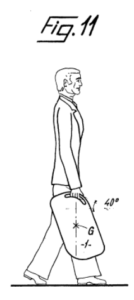
In 1989, René filed a patent for an improved tennis racket with more uniform elasticity which improved control.(7) According to CNN, the racket, known as the “Equijet.” used the
“latest in cutting-edge technology, [combining] the advantages of small and large beams, while looking rather like a violin or guitar.
He introduced it to the up-and-coming Forget in 1988, and it would play no small part in his future successes.
“He was always trying to find new ways of improving the game and having the edge on other players, especially the French players being able to use them,” Forget says.’
In 1991, Lacoste filed a patent for reducing the weight of molded golf club heads by including cavities within them.(8) Overall, during his life, it is claimed that René filed more than thirty patents, including twenty or so between 1960 and the year 2000.
Later Life
Over the last several years of his life, René Lacoste battled health issues. He suffered from prostate cancer and in early October 1996 had surgery on a broken leg. René died in his sleep from heart failure just four days after the procedure, on October 14, 1996, in St. Jean-de-Luz, France. He is buried in the Saint Joseph de Saint Jean de Luz Cemetery, Saint-Jean-de-Luz, Departement des Pyrénées-Atlantiques, Aquitaine, France.(9). His wife, who died at the age of 92 in 2001 is buried in the same cemetery.(10)
Was René Lacoste Black?
In 2016, an internet meme surfaced claiming that René Lacoste was Black due to his mother having Jamaican ancestry. It is generally agreed that this claim is incorrect, but numerous posts on social media, like this one, keep the rumors alive. For a detailed rebuttal of these claims, see our article “Was René Lacoste Black?“
External Resources
How René “The Crocodile” Lacoste Got His Nickname
Interview with People Magazine, 1979.
Tennis Hall of Fame page on René Lacoste
Encyclopedia Brittanica article on René Lacoste
René Lacoste Biography on Amazon
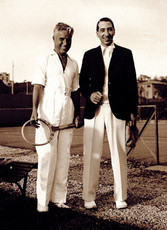
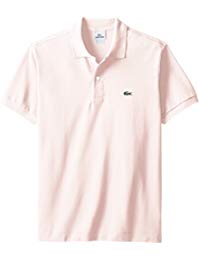
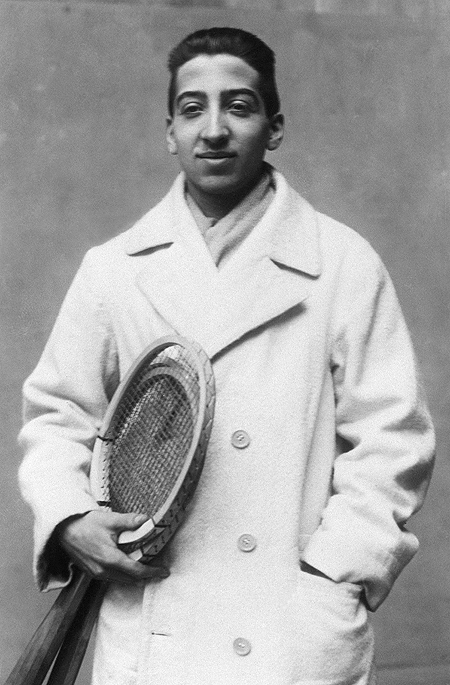
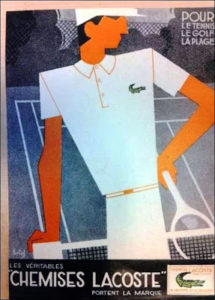
Pingback: Are Lacoste still made in France? – Trackanya